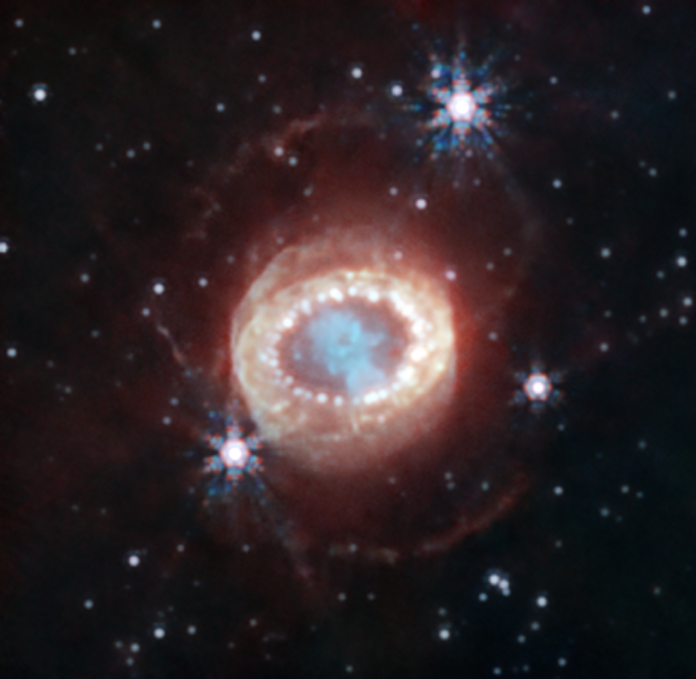SN 1987A has been a target of intense observations at wavelengths ranging from gamma rays to radio for nearly 40 years, since its discovery in February of 1987.
New observations by Webb’s NIRCam (Near-Infrared Camera) provide a crucial clue to our understanding of how a supernova develops over time to shape its remnant, NASA said in a statement.
Webb captured a detailed image of Supernova 1987A. At the centre, material ejected from the supernova forms a keyhole shape.
The image reveals a central structure like a keyhole. The centre is packed with clumpy gas and dust ejected by the supernova explosion. The dust is so dense that even near-infrared light that Webb detects can’t penetrate it, shaping the dark “hole” in the keyhole.
A bright, equatorial ring surrounds the inner keyhole, forming a band around the waist that connects two faint arms of hourglass-shaped outer rings.
“The equatorial ring, formed from material ejected tens of thousands of years before the supernova explosion, contains bright hot spots, which appeared as the supernova’s shock wave hit the ring,” according to the US space agency.
The unparalleled sensitivity and spatial resolution of Webb revealed a new feature in this supernova remnant – small crescent-like structures.
These crescents are thought to be a part of the outer layers of gas shot out from the supernova explosion.
Before Webb, the now-retired Spitzer telescope observed this supernova in infrared throughout its entire lifespan, yielding key data about how its emissions evolved over time. However, it was never able to observe the supernova with such clarity and detail.
Despite the decades of study since the supernova’s initial discovery, there are several mysteries that remain, particularly surrounding the neutron star that should have been formed in the aftermath of the supernova explosion.
Like Spitzer, Webb will continue to observe the supernova over time.
Webb is solving mysteries in our solar system, looking beyond distant worlds around other stars, and probing the mysterious structures and origins of our universe and our place in it, said NASA.
–IANS
na/prw



























